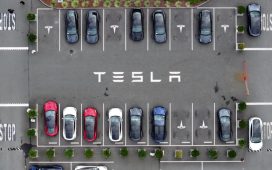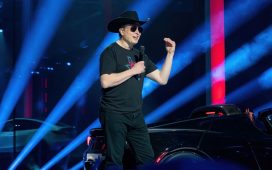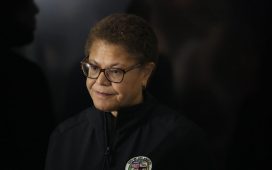Toyota and Lexus combined sales in September were up 16 percent year-over-year, and Bob Carter, Toyota Motor North America’s head of sales, said the company sees a continued strong recovery through the end of the year and through 2021. Carter predicted the industry would finish 2020 at 14.5 million sales and a further rise to 15.5 million next year.
Carter also said dealer profitability in the Japanese automaker’s U.S. network was up 32 percent year-over-year to record levels.
“The automotive industry has not survived, but it’s really thrived during this pandemic,” Carter said, adding that he feels that the Toyota brand would finish the year at about 1.75 million sales in the U.S., with Lexus slating to finish at about 265,000 sales. That’s compared with Toyota brand sales of 2.1 million and Lexus deliveries of 298,114 in 2019.
‘Maximal overtime’
Pickup trucks, crossovers and hybrid sales remain particularly strong for Toyota, Carter said, despite very short dealer stocks of all of those vehicles. He said the automaker’s pickup plant in San Antonio, which makes both the full-sized Tundra and mid-sized Tacoma pickups, is running at “maximal overtime” to keep up with demand.
“That plant is running three Saturdays a month. We’re running wide open,” Carter said.
Carter said that while Toyota is sticking to its plan to expand its hybrid lineup — Toyota added the hybrid-only Venza crossover and redesigned 2021 Sienna minivan to its hybrid lineup in the last several weeks — hybrid sales are being constrained by a lack of batteries.
“Overall, we have 14 [hybrid] models when you combine the two brands,” Carter said. “We are bringing up that (battery) supply, but if we could bring it up a little quicker than the plan, we could sell it. The demand is truly there.”
COVID concerns
In terms of dealing with COVID-19, Reynolds said the safety protocols Toyota put in place after it restarted production in early May are working, but they add complexity to plant operations.
Still, he said Toyota’s depleted dealer lots should start to fill back up to normal levels soon. He said he doesn’t see a second production shutdown on the horizon, even if the virus spread continues to grow.
“We have to balance that intense effort to fill the pipeline with frankly the health and safety of our team members in each of our factories and make sure that we’re doing everything responsibly,” Reynolds said.
“We think that probably by no later than the end of this calendar year, we should have the pipeline closer back to what I’ll call normal than where it was at the end of our shutdown, but it’s taking a while to build back up.”







